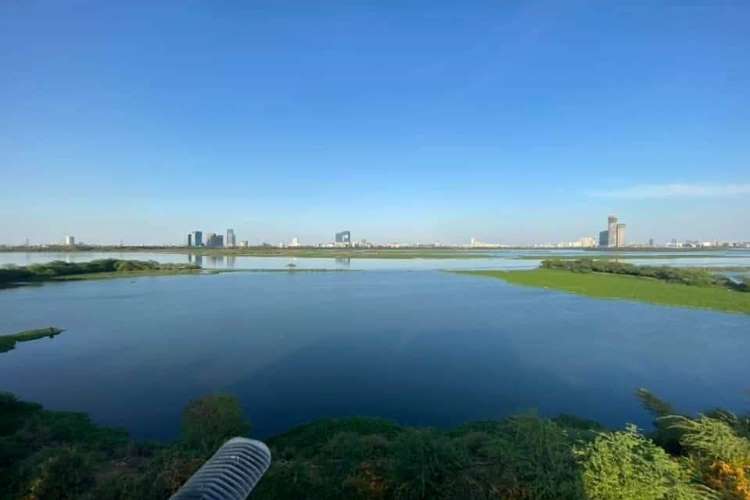
By Mashhood Alam
Thousands of worshippers who reached the banks of the Yamuna in the first week of November last year to offer Chhath puja, a ritual followed by Hindus from eastern India, were treated to rare sight. The river was filled with foam floating above the water, giving the visitors the feel of a hill station. The phenomenon was caused by high ammonia content in water due to the discharge of industrial waste into the river.
Let’s cut to the present. The river has come to life with a steady stream of water, which is the cleanest in several years. The 21-day nationwide lockdown called by Prime Minister Narendra Modi to check the spread of the new coronavirus pandemic has worked wonders on the river with the restrictions on public transport and industries bringing down air and water pollution to unprecedented levels.
READ: How safe is drinking water in times of Covid-19
The Indian capital is one of the most polluted cities in the world. The pollution level varies throughout the year with the air quality index oscillates between 101 and 200 during the January-September period, while if surges to dangerous levels during winters. On March 24, the Prime Minister announced the lockdown that has worked wonders with the restrictions on public transport and industries brought down air and water pollution to unprecedented levels.
The Yamuna helps the city meet at least 70% of its water supply requirements. There are many polluting industrial units in the city that discharge enormous amounts of untreated water into the river every day. There are three major drains in the national capital of Delhi — Najafgarh, Supplementary, and Shahadra that carry more than 70% of the sewage dumped into Yamuna. Experts say the river is ecologically as it has no aquatic life downstream from Wazirabad. Low levels of dissolved oxygen and high degrees of pollution have killed the river.
READ: Govt should extend the lockdown for another five weeks
Till now no official notification regarding the improvement in water quality of the river. Also, no monitoring has been done by government agencies such as the Central Pollution Control Board (CPCB). This is indeed a good opportunity for the Delhi government, Delhi Jal Board and CPCB to study the improvement in water quality and validate the data. And these agencies should take coordinated action and evolve a strategy to institutionalise the improvement in water quality.
Will these visible positive signs of an improvement in water quality stay even after the lockdown is lifted? The pollutants that killed the river may make a comeback once the lockdown is lifted. Moreover, the pandemic could result in an increase in the amounts of medical and hazardous waste dumped into the river.
READ: Coronavirus and capitalism’s hour of crisis
UN Secretary-General António Guterres has called for a “war-time” plan to build back the world ravaged by Covid-19 pandemic, taking note of the environmental signals for the humanity’s future and well-being. The positives from the shutdown should encourage the government and businesses to change the production and consumption patterns that are not sustainable.
(Mashhood Alam is a research scholar in international studies at Jamia Millia Islamia, New Delhi. Views are personal.)
